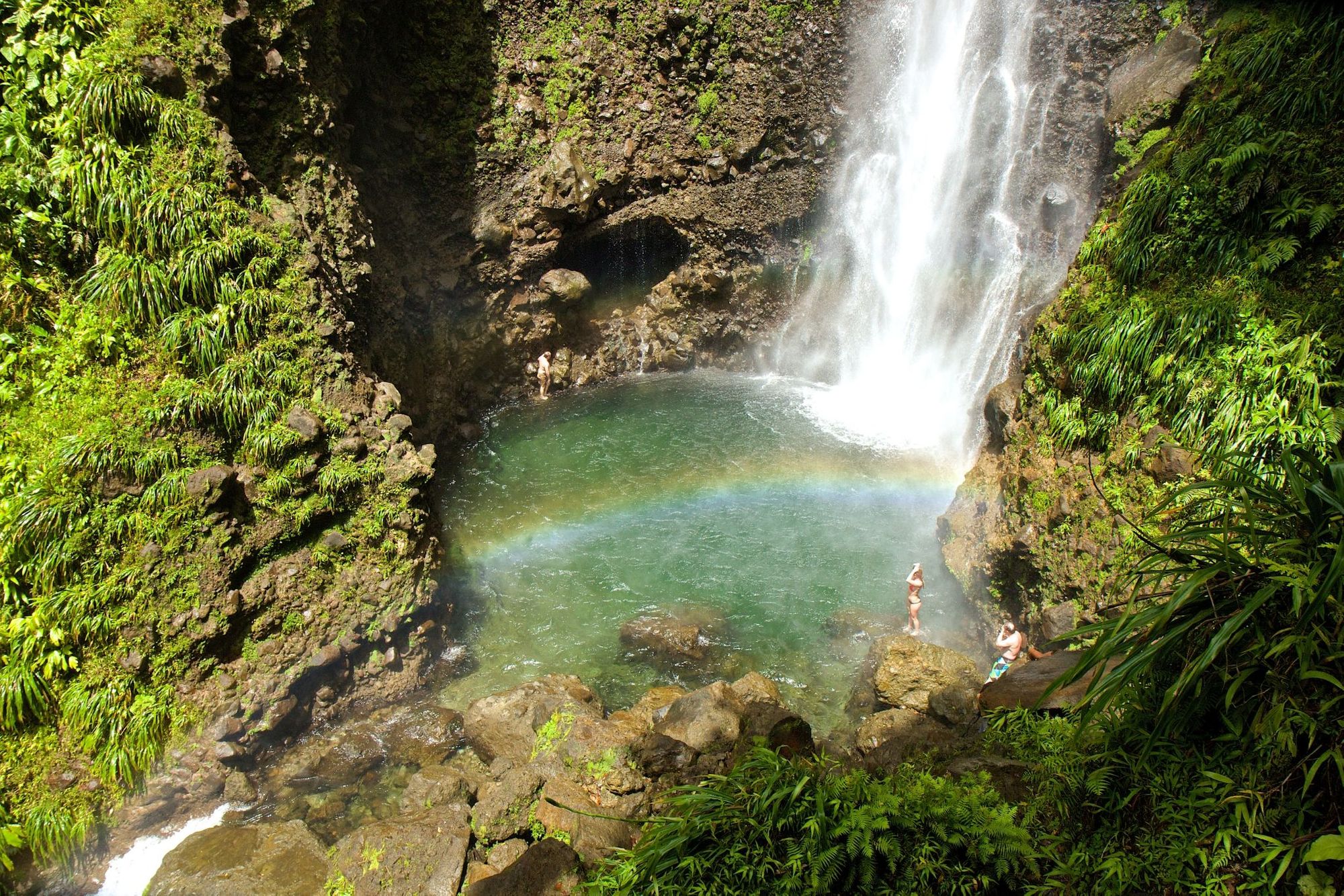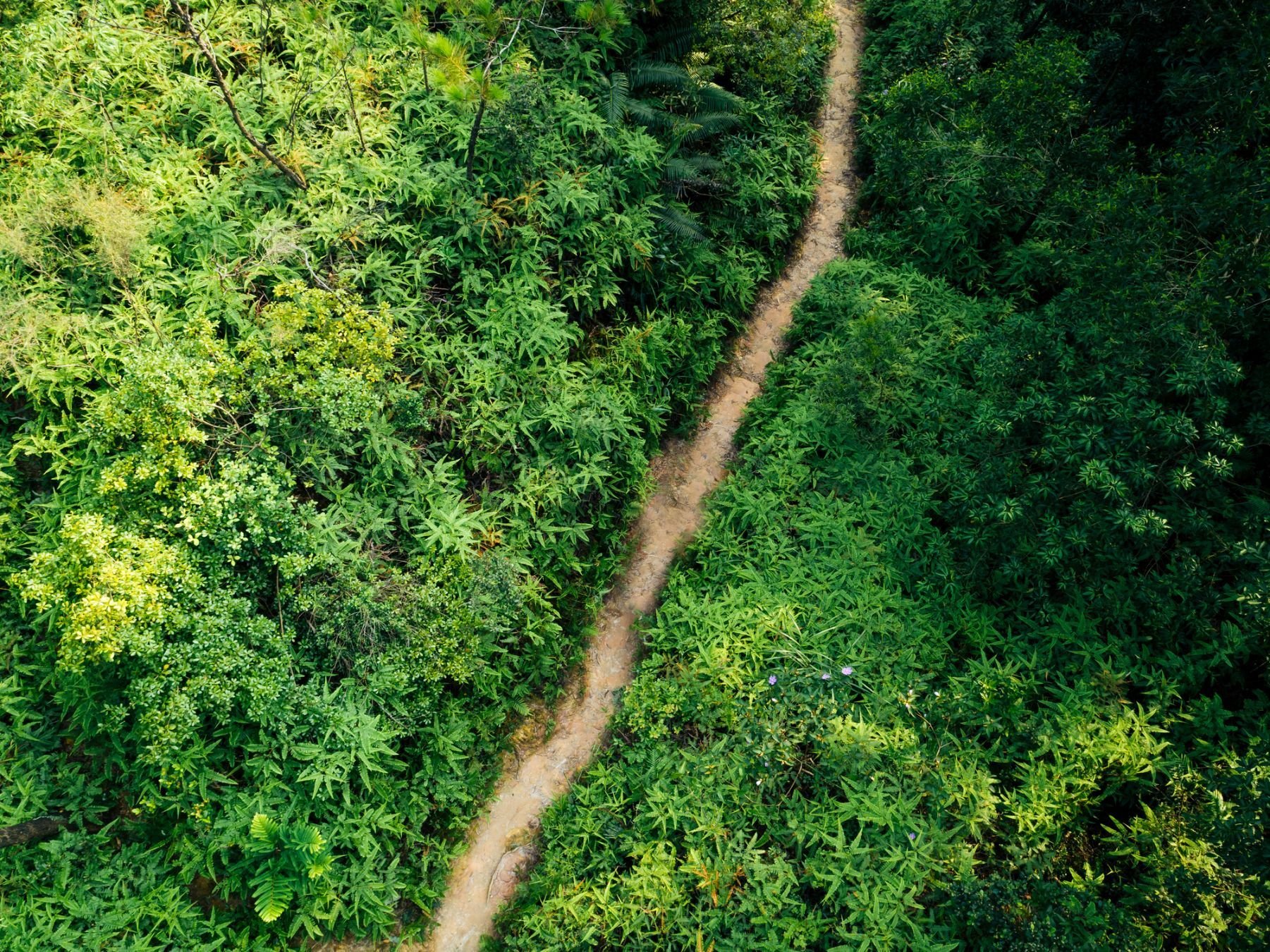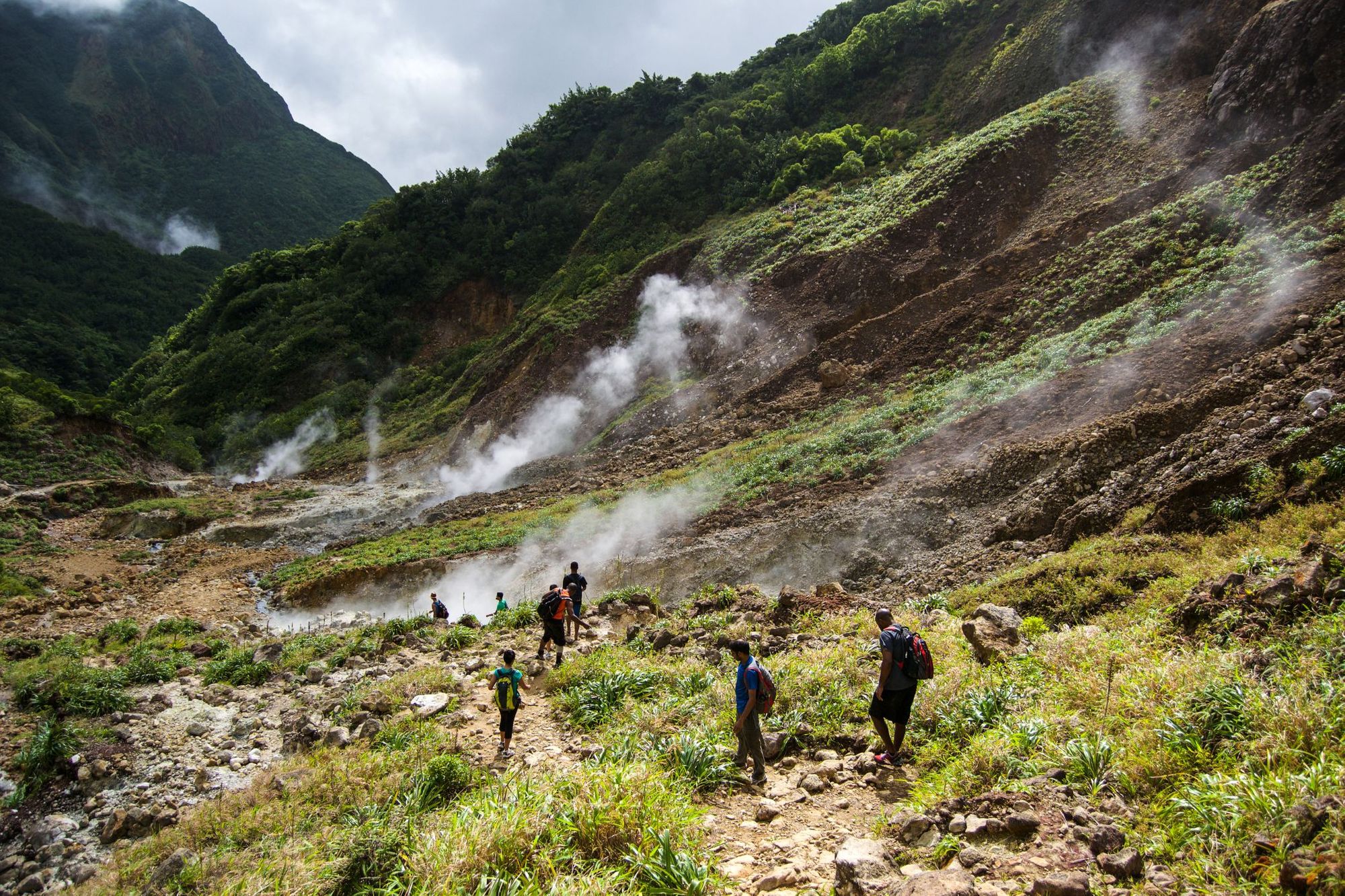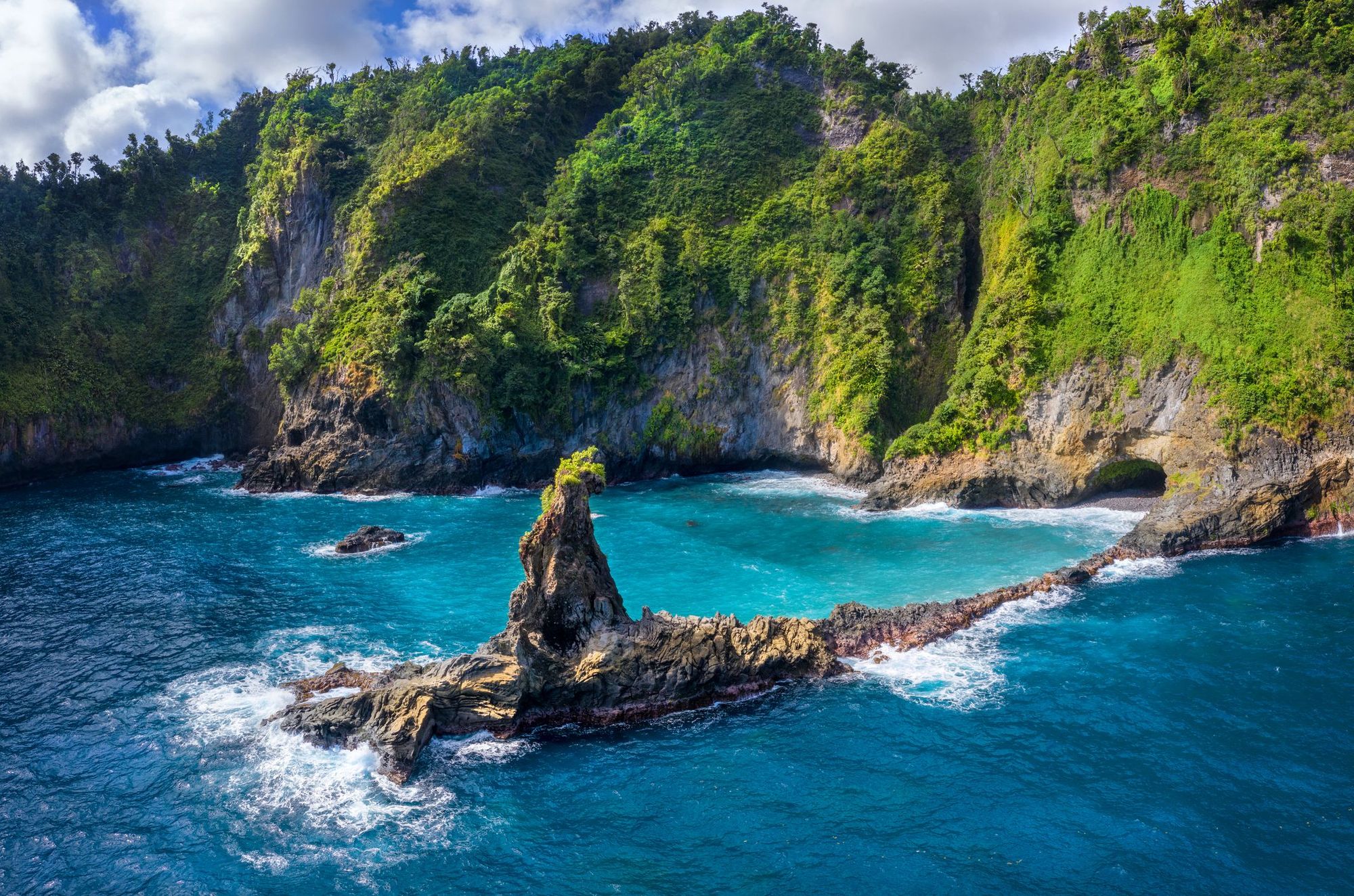“Dominica is not your typical Caribbean island,” says Michael Eugene, an adventure tourism pioneer and route-setter working on his native, 750 km² island, in the Lesser Antilles archipelago. “It’s still so natural. Many people say that it’s the only Caribbean island that Columbus would recognise should he return tomorrow.”
Not to be confused with the far larger Dominican Republic, which sits 650 miles (1034km) northwest and shares the island of Hispaniola with Haiti, Dominica has the beautiful beaches and ocean views you’d expect from a Caribbean paradise. But beyond lies a rugged, wild interior where crystal clear waterways flow through dense rainforest, and volcanoes which tower over deep valleys and gorges also heat hot springs - and globally-significant boiling lakes.
Since Hurricane Maria, my experiences on the trail have been completely different... The rivers have altered their courses. Landslides have changed the landscape.
Running through all of this is the 14-stage, 115-mile (185km) Waitukubuli National Trail - the Caribbean’s first long-distance hiking route - which starts at Scott’s Head in the south of the island and finishes in the Cabrits National Park in the north. Michael helped develop the trail, which opened in 2012.
“Waitukubuli is the indigenous name for Dominica,” he says. “It means ‘tall is her body’, and that’s the name the Kalinago, the indigenous people, gave to the island because they found it incredibly steep. In Dominica, there’s really only two directions: up and down.”
It was in the 1990s that a Dominican resident in the UK, Dr. Bernard Wiltshire, came across the 117-mile (285km) Offa's Dyke Path, a long-distance walking trail along the Welsh-English border, and got the idea to create a similar route in Dominica. Wiltshire founded the Waitukubuli Ecological Foundation, and the idea for the Waitukubuli Trail was born.

“The idea was to take a lot of our pre-existing trails - the Kalinago trails, and the runaway slave trails, and join them into one continuous thread,” Eugene says. “The trail was built from 2007-2011, and I spent 18 months on the team as the product development expert. I hiked the trail - which is 14 segments - many times, in both directions, and I wrote the trail descriptions, and I have a very grounded and deep connection with the trail. I worked with a lot of the people who built the path, and many of them are now guides along the trail.”
There is always an energy that you get; a good vibration, whenever you walk the forest. You still get that sense of being at one in nature.
Tourism accounts for almost 25% of GDP and employment in Dominica, but the industry, and so much more, was left in ruins after Hurricane Maria, a deadly hurricane that ripped through the Caribbean in September 2017. Dominica and Puerto Rico were hit particularly badly by the hurricane.
“It devastated Dominica, and it devastated the trail,” says Michael. “We were unable to welcome guests because we had to take care of ourselves and focus on the home front. Rebuilding after category five can never be complete. In 1979, we had another terrible hurricane - Hurricane David - and up until about 10 years ago, you could still see the impacts of that. These impacts run deep.”
Voluntourism projects aimed at rebuilding the island began three months after Hurricane Maria hit, and it was around seven months later that cruise tourism returned to Dominica. Michael stepped away from the outdoor adventure industry during this time. “I remember the first trail I tackled after the hurricane,” he says. “It normally took two and a half hours to hike, and it took us seven hours. Landslides meant crossings were covered, and fallen trees were everywhere. It was madness. So for the next six months I forgot about business. I needed to repair my home, keep my family together and find new ways of survival, because clearly, what we had been doing was not going to work.”
It was only after a meeting with a friend who reminded Eugene that “there is a market for people who want to come to rough it up,” that the Dominican decided to revisit the Waitukubuli Trail - and the prospect of outdoor adventure business.

“We’ve had limited resources, so the reconstruction of the trail has been a slow process,” says Michael, but almost all of the trail is now re-opened to the public.
“Since Hurricane Maria, my experiences on the trail have been completely different. It's a different animal altogether. Because, the rivers have altered their courses. Landslides have changed the landscape too. There are areas where the trees have blown down, and primary species have gone and given rise to secondary forest. So you have a completely different vegetation, which prior to the hurricane, wasn't there. But one thing that's common - just one common thread - is that there is always an energy that you get; a good vibration, whenever you walk the forest. You still get that sense of being at one in nature.”
Dominica is 29 miles (47km) long and 16 miles (26km) wide, but the Waitukubuli Trail runs 115 miles, weaving and winding through the varying landscapes of the island.
“If you’re looking for jungle, coral and whales, and other wildlife, you can find it all here in one place,” says Michael. “We’ve been called the Jurassic Park of the Caribbean. There are nine active volcanoes, which means we have a tremendous mountain mass running along the central backbone of the island, and with that, we have gorges, rivers, waterfalls and lakes. We have steam caves and sulphur pools, and the largest boiling lake in the western world. Dominica also has the last remaining indigenous people of the Caribbean.”

A boiling lake is exactly what it says on the tin; a bubbling lake of greyish-blue water, with steam rising off the boiling water. Reaching it involves a hike through the paradisiacal Titou Gorge and the comparatively rough land of the Valley of Desolation. While swimming is strictly-prohibited (for obvious reasons), hikers are welcome to dip into the hot springs elsewhere on the island.
We’ve been called the Jurassic Park of the Caribbean.
“There’s water everywhere,” says Eugene. “As steep as we are high is as deep as the coast goes underwater. We have almost no continental shelf, so whereas on an island like Barbados, you can walk out 100ft and still be waist deep, in Dominica you would be covered many times over. And the combination of deep and clean water means a pod of whales live just off the coast, which makes for whale watching opportunities as well.” These conditions are also excellent for coral and underwater life, and the scuba diving ranks amongst the best in the Caribbean.
Further inland, the wildlife varies from boa constrictors to agoutis and herons, hawks and hummingbirds, with over 200 species of bird to be found. The most notable are the jaco and sisserou parrots, the largest Amazon species of bird.

The terrain on Waitukubuli is diverse, and the experiences can varym, Eugene emphasises, highlighting two contrasting offerings, along two stages of the trail.
On stage three “you traverse three communities and walk through very green, cool, mountains and forest. Along the way it’s very steep and crosses a massive river; which is great for swimming. It ends at the sulphur springs, where you get to relax and enjoy the nature spa”. Stage 14 meanwhile starts with a meal at the home of a local family, “then we go down to the local pontoon to meet the local fishermen and take a 45-minute coastal ride in a fishing vessel. It gives a different perspective, looking at Dominica from the outside.
“The chances of you being on the trail alone with your guide are really high. So there’s always that sense of serenity.” A lot of segment markets and directional signs have been affected by the hurricane, but the trail is once again bringing in tourism - and aiding the island’s recovery.
“The trail continues to be enquired about, and there’s a core number of guides on the Waitukubuli trail, which is increasing,” says Eugene. Indeed, the trail visits areas that have never seen tourism before at all. “There is a direct benefit to the local, rural communities along the route. There is hope, and optimism. The trail allows you to experience nature - and see its value.”
Inspired? Check out our hiking adventures in the United States

